Mesquite: The Brawny Beauty for All Over the Home
It can be a hardscrabble life for a mesquite tree growing up in the American West. Nature hits it with everything she’s got, from the good — plenty of sunshine — to the harsh. Punishing sandstorms, monsoon deluges, winter frost and sometimes snow, thermometer-popping summer heat … the mesquite weathers it all, and thrives. The mesquite is the epitome of the adage that what doesn’t kill you makes you stronger.
A member of the legume family for the beans it produces, the mesquite tree can rise upward of 60 feet and live more than 200 years, and its roots are well established across a wide swath of arid and semiarid countryside, growing wild and prodigiously in the Chihuahuan, Sonoran, Mojave and Colorado deserts of Texas, Arizona, New Mexico and California, and beyond into Utah, Oklahoma and even parts of Kansas and Arkansas.
Native peoples have long appreciated the stalwart mesquite, for the food its bean pods provide most particularly. Spanish settlers turned to mesquite for its strong, hard lumber to build mission doors and altars, fences, flooring and furniture. Later, settlers expanded its use for wagon wheels and railroad ties. Today cooks are wild about mesquite — it has replaced hickory as the favorite flavoring for the great American grill.
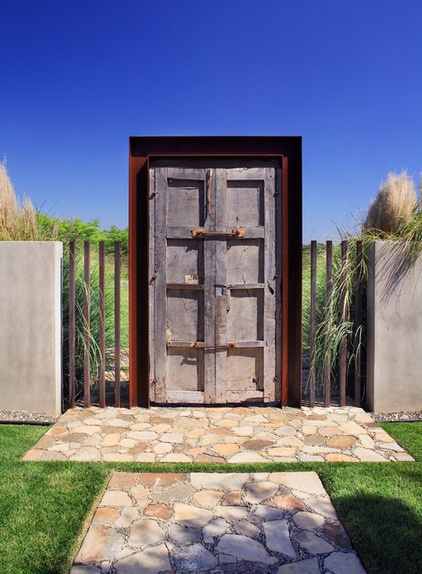
Early Texas cattlemen, however, were far less enthusiastic; in fact, they were downright antagonistic toward the hardy mesquite — it broke up the range and ruined the pasture. Worse, it was damned stubborn and nearly impossible to eradicate.
Mesquite roots can clamor down 100 feet to find water, if necessary. And trying to yank a mesquite out of the ground is not only a Herculean task, it’s pretty much a futile exercise: The wide and deep root system simply pops out another tree.
Mesquite flourishes in dense stands called bosques. In Texas those bosques are filled with honey mesquite (Prosopis glandulosa), which makes up nearly 90 percent of the mesquite in Texas. Early Texans, however, tended to call their mesquite ironwood, not because it’s in the ironwood family — it isn’t, and ironwood trees grow only in the Sonoran Desert — but more as a derisive nickname: Mesquite wood is so dense and hard, it can break saws.
Shown: A 200-year-old mesquite doorway framed in steel beckons visitors to the courtyard beyond.
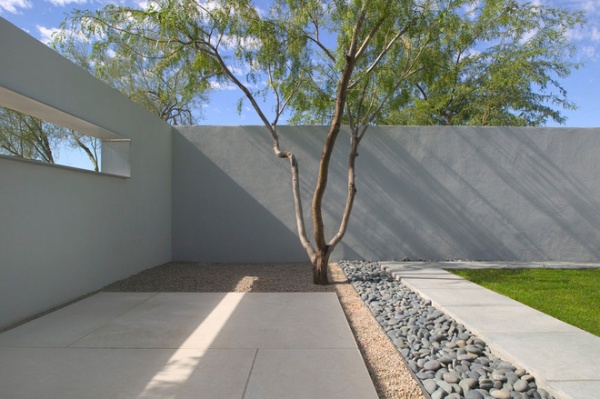
Mesquite triumphed over the cowboys in the end, at least in terms of its reputation: In Texas the “pest” has risen to stardom; it’s even been rebranded as a Texas original. If you search on Houzz or look elsewhere on the web for mesquite, you’ll see two varieties: “Texas mesquite” and mesquite from everywhere else.
Of course, passion for mesquite isn’t limited to Texas, even if that state does boast more than 50 percent of the estimated 100 million acres upon which mesquite thrives in the western states.
While honey mesquite is the most prevalent species, found from Texas to Baja California, there are two other species of note, the screwbean mesquite (Prosopis pubescens) and velvet mesquite (Prosopis velutina); the latter is found only in the Sonoran Desert of Arizona and Mexico.
Today the mesquite tree is a key component in native, water-wise landscaping for the very reasons Texas cattlemen fought it: Mesquite’s a dogged survivor. Besides, as this image illustrates, mesquite cleans up well when citified.
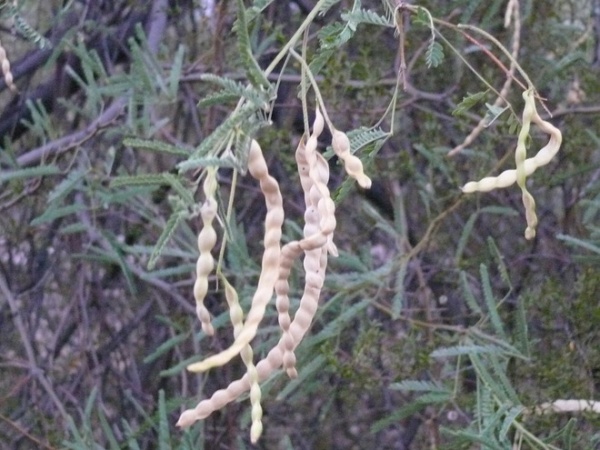
Actually, there’s a caveat to the clean look of the mesquite tree: Be careful where you plant one. Mesquite produces a healthy harvest of bean pods, which dry in early summer and then tumble to the ground, seemingly en masse, carpeting whatever’s below: walkways, patios, driveways, swimming pools, cars, hungry coyotes (it’s said that mesquite beans make up 75 percent of a coyote’s summer diet).
Clever canines aside, mesquite beans have long been a staple food source for native cultures across the Southwest, and they’re a centerpiece of the current local food revival, particularly in southern Arizona, where velvet mesquite pod gathering is a seasonal event at Desert Harvesters. Mesquite gleaners can bring in their pods for grinding into a sweet and delicate gluten-free flour.
Shown: Dry bean pods on a velvet mesquite
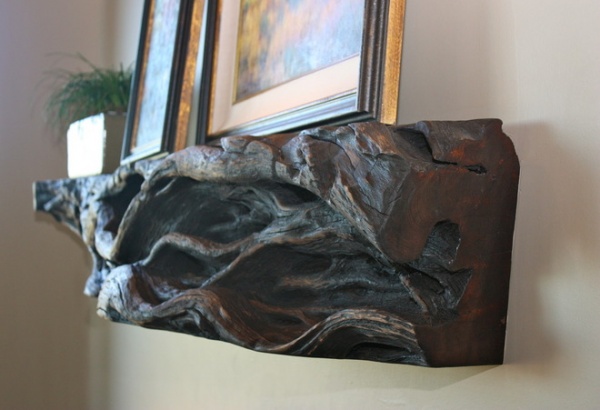
Custom Mesquite MantelMesquite is a survivor; it’s also a proud product of its environment, its brawn and beauty honed by the rugged western wildlands the species calls home.
“Droughts, floods, temperature changes — mesquite goes through all sorts of weather,” says Julie Taber of Taber and Company, a custom mesquite design and millwork company in Tucson, Arizona. “That’s what gives it its unique, rich character.”
It’s not easy to work with — as the Texas ironwood moniker alludes to — but the labor is the reward for the true artisan. “Mesquite goes into any architecture; it’s timeless — and it will last a lifetime,” says Taber. Shown here is a Taber and Company hand-carved mesquite wood mantel for the Desert Highlands Golf Club in Scottsdale, Arizona.
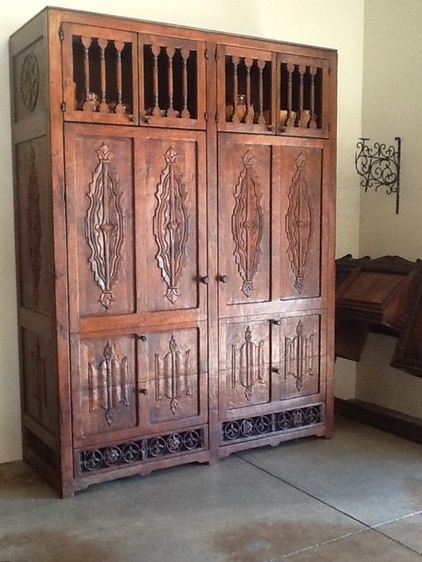
Since the days of the Spanish colonists, mesquite has been used for furniture, floors and doors, for good reasons. Its wood is strong, with a density greater than hardwoods like hickory and maple. Its sapwood is yellow; the heartwood is reddish brown and darkens with age. Its medium to coarse grain is sometimes swirled, with a natural light luster. Its designworthy “defects” are intriguing, including bug holes and sometimes streaks of minerals. (Adding bits of turquoise to a handcrafted mesquite table or countertop is a popular trend.)
While mesquite may grow prolifically, not every tree makes the grade, and not every craftsperson can handle the special needs required to create fine mesquite furniture. Those that can, rise to the occasion and do mesquite proud. Take this handsome armoire-style piece by Taber and Company as one example. This custom unit encases a double-doored refrigerator.
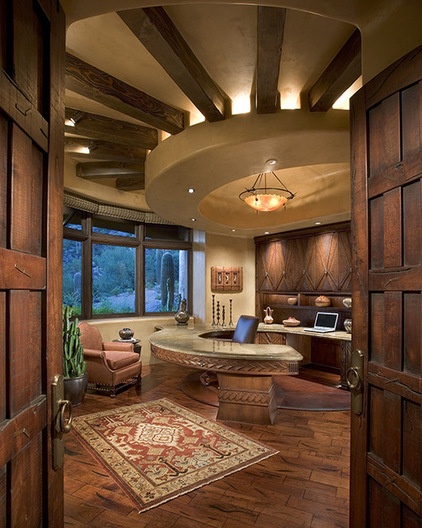
Why mesquite? “We love blending in the use of mesquite along with alder in furniture, love the look of mesquite flooring in a rustic setting and enjoy using mesquite countertops to break up the use of stone slabs,” says Kati Botkin, a designer at Bess Jones Interiors, which used mesquite floors here.
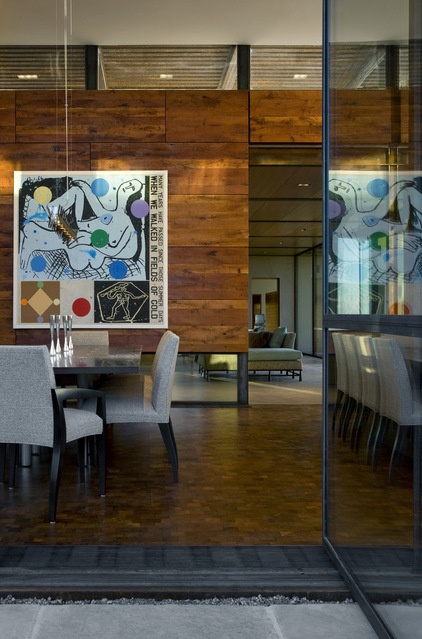
Designed by Lake Flato Architects and located in Scottsdale, this modern home has a dining room that features walls of solid mesquite laid up in panels; the floor is end-cut mesquite.
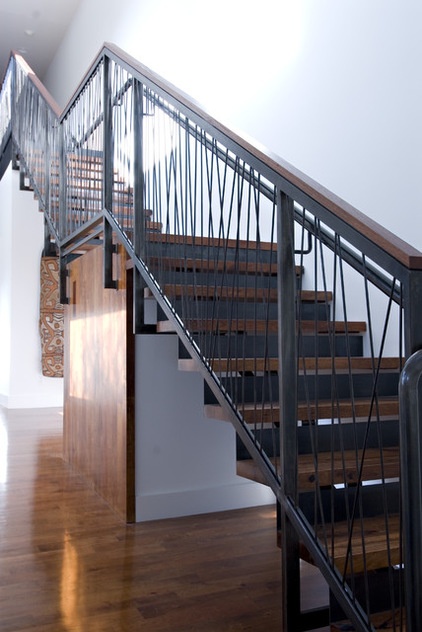
Here we see mesquite flooring and solid mesquite stair treads from Urban Jobe Architecture in Austin, Texas.
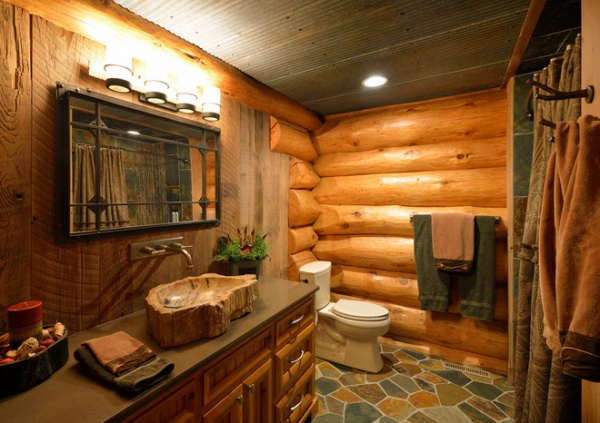
A testament to mesquite’s many attributes: The sink in this upscale rustic home is carved from mesquite.
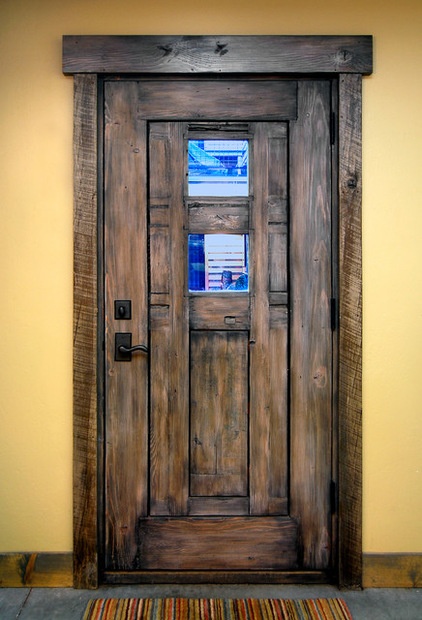
Here’s a classic-style custom door created with a patchwork of reclaimed mesquite.
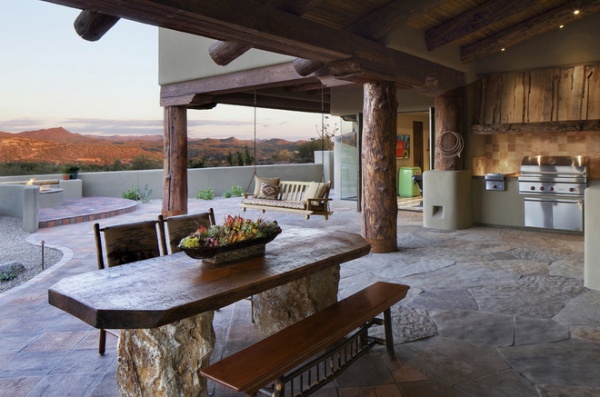
These homeowners get a view of the desert and the sunset, and a front-row seat at a handsome mesquite-topped table to boot. Life is good in Phoenix.
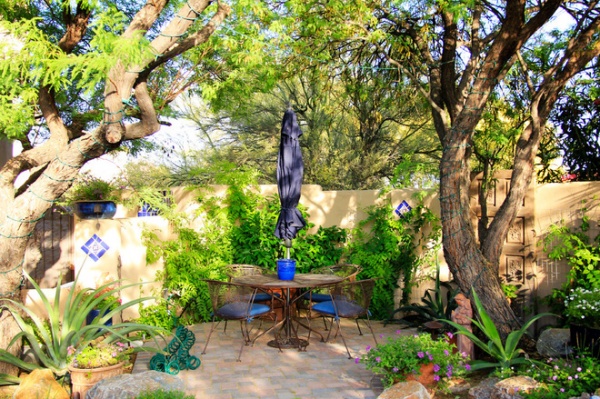
The great thing about living where mesquite grows naturally is the opportunity to have a garden retreat as comely as this.
It’s also heartening to note that outdoor places beneath the mesquites will continue, despite reports that the climate in the Sonoran Desert is going to get hotter in the decades to come. New research by the University of Arizona in Tucson finds that the mesquite will be perfectly happy even if things get a bit toasty in the future. “Our results show that even the smallest mesquites are better adapted for thriving under elevated temperatures and dry conditions — the projections for our future climate — suggesting that these woody plants are here to stay,” writes Greg Barron-Gafford, who led the study.
We couldn’t be happier.
More:
Houzz Tour: Wild for Wood in Central Texas
‘Shou-Sugi-Ban’ Is Setting the Siding World on Fire












